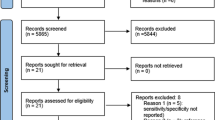Abstract
Objective: To determine the prostate specific antigen (PSA) population standards of a cluster of Turkish men with no clinical evidence of prostate cancer. Patients and methods: We evaluated PSA values of the men who were living in a well-defined, rural district of Western Anatolia. Two hundred fifty-seven men agreed to participate in this population-based study. They underwent clinical examination, transrectal ultrasonography and serum PSA measurement. The association between serum PSA and age, prostate volume and age, PSA and prostate volume, and PSA density (PSAD) and age were assessed. Distributions of serum PSA levels, prostate volumes (PV), and PSAD values as a function of age were generated. Results: The upper limit of normal PSA concentration were 4.51 ng/ml for men aged 40–49 years, 4.36 ng/ml for 50–59 years, 6.17 ng/ml for 60–69 years, and 10.18 ng/ml for over 70 years. The upper limit of normal (95th percentile) for the serum PSA concentration increased with age. Across the entire age range, no correlation was found between the serum PSA concentrations and age while significant correlation was found between serum PSA concentration and prostate volume. Conclusion: In this present study, the PSA values in different age intervals showed higher than those observed in previous studies. The PSA values are mainly affected by prostate volume rather than age.
Similar content being viewed by others
References
MK. Brawer (1989) ArticleTitleProstatic intraepithelial neoplasia and prostate specific antigen Urology 34 62–65 Occurrence Handle10.1016/0090-4295(89)90162-3
JE Oesterling SJ Jacobsen CG Chute et al. (1993) ArticleTitleSerum prostate specific antigen in a community-based population of healthy men: establishment of age-specific reference ranges JAMA 270 860–864 Occurrence Handle10.1001/jama.270.7.860 Occurrence Handle7688054
RJ Babaian H Miyashita RB Evans et al. (1992) ArticleTitleThe distribution of prostate specific antigen in men without clinical or pathological evidence of prostate cancer: relationship to gland volume and age J Urol Part 2 147 837–840
JE Oesterling Y Kumamoto T Tsukamoto et al. (1995) ArticleTitleSerum prostate-specific antigen in a community-based population of healthy Japanese men: lower values than for similarly aged white men Brit J Urol 75 347–353 Occurrence Handle7537604
GN Collins RJ Lee GB Mckelvie et al. (1993) ArticleTitleRelationship between prostate specific antigen, prostatic volume and age in the benign prostate Br J Urol 71 445–450 Occurrence Handle7684650
BL Dalkin FR Ahmann JB. Kopp (1993) ArticleTitleProstate specific antigen levels in men older than 50 years without clinical evidence of prostatic carcinoma J Urol 150 1837–1839 Occurrence Handle7693980
B Akduman T Alkibay A Tuncel I. Bozkýrlý (2000) ArticleTitleThe value of percent free prostate specific antigen, prostate specific antigen density of the whole prostate and of the transition zone in Turkish men The Canadian Journal of Urology 7 IssueID5 1104–1109 Occurrence Handle11114873
MK Brawer MP Chetner Beatie J et al. (1991) ArticleTitleScreening for prostatic carcinoma with prostate specific antigen J Urol 147 841–845
RJ Babaian HA Fritsche RB. Evans (1990) ArticleTitleProstate-specific antigen and prostate gland volume: correlation and clinical application J Clin Lab Anal 4 IssueID2 135–137 Occurrence Handle1690280
T Rhodes CJ Girman SJ Jacobsen et al. (1999) ArticleTitleLongitudinal prostate growth rates during 5 years in randomly selected community men 40 to 79 years old J Urol 161 IssueID4 1174–1179 Occurrence Handle10.1097/00005392-199904000-00033 Occurrence Handle10081864
JL Bosch WC Hop CH Bangma et al. (1995) ArticleTitleProstate specific antigen in a community-based sample of men without prostate cancer: correlations with prostatic volume, age, body mass index, and symptoms of prostatism Prostate 27 IssueID5 241–249 Occurrence Handle7479391
RG Aarnink JJ Rosette Particlede la AL Huynen et al. (1996) ArticleTitleStandardized assessment to enhance the diagnostic value of prostatic volume; Part II: Correlation with prostate-specific antigen levels Prostate 29 IssueID5 327–333 Occurrence Handle10.1002/(SICI)1097-0045(199611)29:5<327::AID-PROS8>3.0.CO;2-6 Occurrence Handle8899006
JW Moul IA Sesterhenn RR Connelly et al. (1995) ArticleTitleProstate specific antigen values at the time of prostate cancer diagnosis in African American men JAMA 274 1277–1281 Occurrence Handle10.1001/jama.274.16.1277 Occurrence Handle7563532
JE Oesterling DL Bilhartz DJ. Tindall (1991) ArticleTitleClinically useful serum markers for adenocarcinoma of the prostate, II: prostate specific antigen An Urol Assoc Update Ser. 10 137–144
Author information
Authors and Affiliations
Corresponding author
Rights and permissions
About this article
Cite this article
Müezzinoğlu, T., Lekili, M., Eser, E. et al. Population Standards of Prostate Specific Antigen Values in Men over 40: Community Based Study in Turkey. Int Urol Nephrol 37, 299–304 (2005). https://doi.org/10.1007/s11255-004-7976-y
Issue Date:
DOI: https://doi.org/10.1007/s11255-004-7976-y




